The SAMSUNG SMX-C20 digital camcorder, with ergonomic design, blends style, comfort and technology, to let you capture life’s special moments and share them over the Internet – in one touch…..
Samsung Electronics Company presented a new digital camera with a stylish ergonomic design, equipped with multiple functions. Models SMX-C20, SMX-C24 and HMX-M20 equipped with built-in lenses Active Angle with a tilt angle of 25 degrees, inherited his design from cameras SMX-C10 and HMX-R10. According to the manufacturer, this lens makes it possible to hold the camera in a more natural position as it has a slope of 25 degrees, which reduces the overall load on the wrist and elbow. In addition, the LCD screen is out of sight and allows the user to focus on your subject.
Samsung have revealed a bunch of compact camcorders at the CES 2010 which features the company’s Active Angle Lens design allowing a more natural and comfortable way to shoot videos or still images by angling the lens 25-degrees downward. One model would be the SMX-C20 camcorder which is surprisingly already up for preorder at Amazon.
Camcorder manufacturers know they need a hook to sell these devices, and with Samsung’s SMX-C20, that means deviating from the traditional camcorder look. The C20 lens is angled approximately 25 degrees upward, giving it a more natural feel when gripped. The result is a comfortable and ergonomic design, one Samsung claims is ideal for long recordings.
The Samsung SMX-C20 ultra-compact camcorder offers an LCD screen boasting a resolution of 720 x 480 pixels allowing remarkable standard definition video recording while users can also shoot still images at a resolution of 2 megapixels. The unit also sports H.264 compression which offers longer recording time period over typical MPEG2 format. It allows users to get in close to the action regardless the subject’s distance courtesy of its 10x optical zoom feature.
Design alone does not a great camcorder make, and the C20 has plenty of competition from other devices in the same $200 (MSRP) price range, including standard-definition models from Sony and Panasonic in addition to the ever-growing pocket HD camcorder lineup. Read the review to find out how the SMX-C20 performed in my two weeks of testing, and find out if its features and modes make up for its relatively low resolution.
There are two models in the SMX-C lineup, the C20 and the C24. The C20 comes in red and purple and requires an SD or SDHC card up to 32GB. The C24 comes only in black and has a 16GB solid state drive (SSD).
The SSD defines the current crop of Samsung SD and HD camcorders. SSDs are smaller, lighter, faster, more reliable and consume less power than hard disk drives. Compared to SD cards, SSDs are generally faster at accessing data.
If the Samsung C20 were any smaller, it would rival pocket camcorders in compactness. It measures 1.39 x 2.21 x 4.29 inches and weighs approximately 5 ounces. It’s easy to grip and I could almost wrap my hand completely around the device.
The front of the C20 houses the lens, which is slanted 25 degrees upward from the rest of the body. On the back are the record button, charge indicator light, and a compartment cover hiding a USB jack, DC-in jack, AV jack, SD/SDHC slot, and a removable rechargeable battery. The palm side is bare sans the hand strap hook, and the 2.7-inch LCD swivels out from the opposite side.
The LCD opens up 90 degrees and rotates 180. Underneath it are the power button, speaker, share button (uploads clips directly to sharing sites once set up), display button, mode button, and the smart auto/view button. A record button, control knob for navigating the menu and manually adjusting picture controls and menu button are all found on the display panel.
The C20’s glossy plastic case is a fingerprint magnet, but the palm-side of the device consists of textured plastic. It’s a nice touch and makes the ergonomic C20 even more comfortable for shooting.
I do have some nitpicky issues with the build, however. For starters, the buttons feel cheap, it’s almost impossible to tell if you’ve pressed the power button because it doesn’t click when pressed, and the power up/power down cycle takes a few seconds. I accidentally left the C20 on more than once after thinking I had pressed the button. Also, the record button requires a deep but light push. It reminds me of an old and worn game controller.
There’s no question the angled lens takes some getting used to, particularly if you are used to shooting straight on with a traditional camcorder, but I think it’s an excellent design choice. With other camcorders, I’m always bending my wrist back to shoot upward, which is painful after a few minutes of use. Samsung has eliminated the need for awkward wrist contortions with the C20, and I hope other camcorder manufacturers are taking note.
Considering the C20’s small size, the 2.7-inch LCD display is relatively large, but not large enough to support touch controls. As such, users control all menu navigation through a control knob, which I prefer to clumsily tapping a small screen attempting to select the proper menu item. The knob also doubles as a shortcut menu, allowing you quick access to the manual exposure and focus controllers.
Keeping in line with other low-cost camcorders, Samsung doesn’t include a lens cover with the C20, or even a cloth bag to protect it from dust and scratches, leaving the lens exposed to all manner of debris and dirt. I don’t understand why manufacturers are reluctant to include these items with their camcorders as they can make a huge difference in keeping the lens free from dust and scratches.
For video, the C20 has five modes broken down into two resolutions: TV and Web.
- TV Super Fine: 720×480 (60i)
- TV Fine: 720×480 (60i)
- TV Normal: 720×480 (60i)
- Web Fine: 640×480 (30p)
- Web Normal: 640×480 (30p)
Though Samsung doesnt publish the bitrates, I assume TV Super Fine has a higher bitrate than TV Fine or TV Normal, which accounts for the difference in quality.
The C20 is set to TV Fine by default, so you’ll have to bump it up manually through the menu if you want to record at the highest resolution.
The C20 has a surprisingly deep menu system, which is really what sets it apart from HD pocket camcorders like the Flip that have limited or no menu controls.
Menu items include:
- iScene (auto or preset, automatically sets shutter speed and aperture according to shooting conditions; there are 15 presets, including sports, high-speed, daylight and night).
- Video resolution.
- Photo resolution.
- 16:9 wide (on/off, picture records at 4:3 aspect ratio when off).
- Exposure value (manual/auto).
- Back light (for backlit subjects).
- Focus (manual/auto).
- Anti-shake.
- Digital effect (ten options, including black & white, negative, mosaic, and sepia).
- Fader.
- Wind cut.
- Digital zoom (on/off, up to 1200x).
- Time lapse record.
- Guideline.
- Settings.
A dedicated white balance is missing, but that is probably set through the iScene presets. Still, it’s odd that Samsung would include manual focus and exposure and not a manual white balance.
I took Sony to task in my CX110 review for its small 2.7-inch LCD, but I’ll laud Samsung for including one on their C20. The difference is that the CX110 was a touchscreen, and 2.7-inches is too small for effective touch navigation. Also, the C20 is a much smaller device, closer in size to a pocket camcorder than an entry-level HD camcorder. The last pocket camcorder I reviewed, the Kodak PlaySport, had a 2.0-inch screen.
Various display settings are tucked in the SMX-C20 menu to control LCD brightness, color and toggle the LCD enhancer, which ups the displays contrast. This full set of options does well in combating solar glare and the 230k display dots are sufficient to monitor the action.
The Samsung SMX-C20 ultra-compact camcorder is now available for preorder at Amazon with a price of $199.99.
Resources :digitalcamerareview.com,jdmag.com

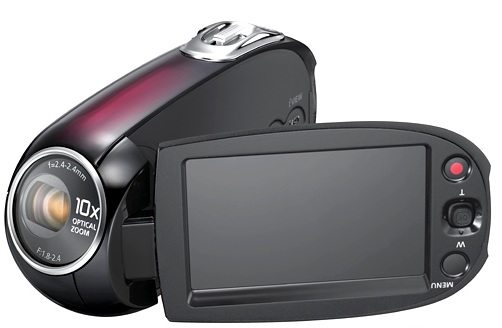
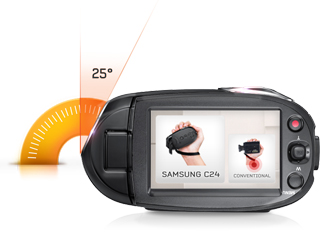
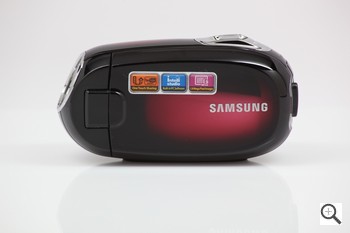
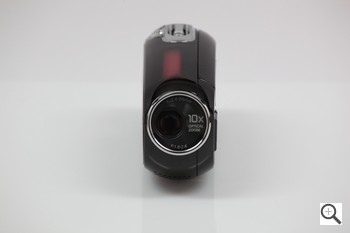
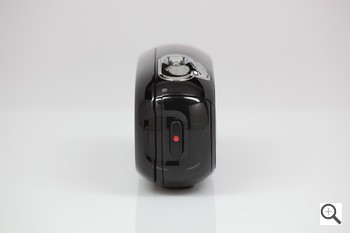

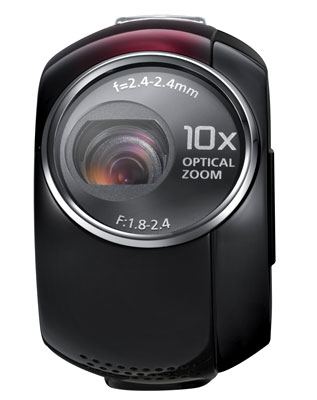
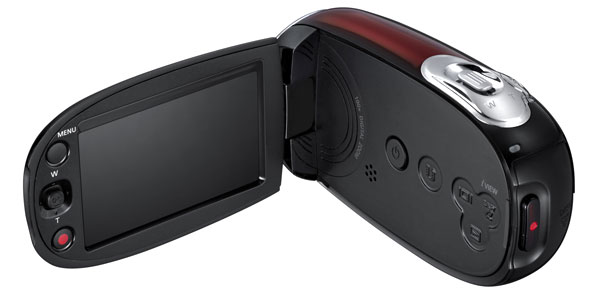
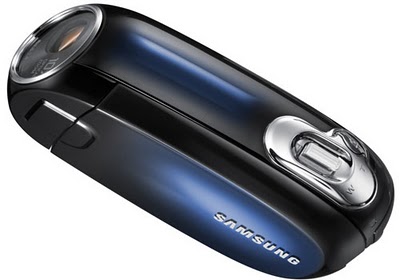
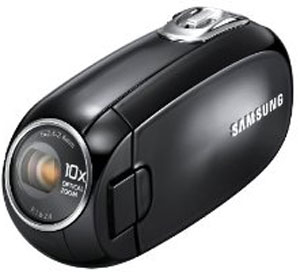
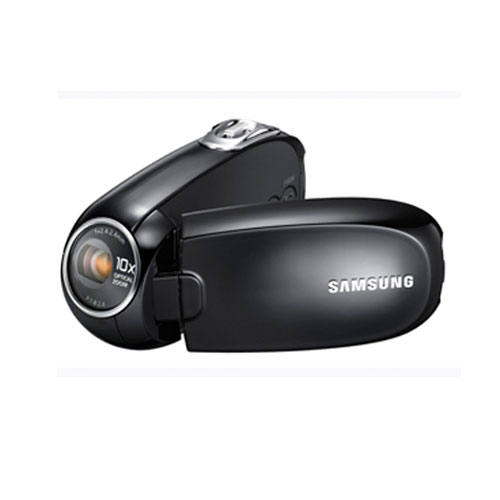

Pingback: Samsung SMX-C20 Camcorder Review | TheTechJournal.com
Pingback: PPC Mad Scientists Prove Google Right… And Wrong | Geomatic Solutions - Website Marketing Expertise
Pingback: samsung camcorder software | Samsung Digital
C20 software is terrible. Video needs to be converted which takes hours to do, then it is difficult if not impossible to burn onto a CD. I found this unit very discouraging. Next move for me is to take the damn thing back. I will try another day to get it right then it goes back to where I bought it.
Too bad because I love the camera unit.